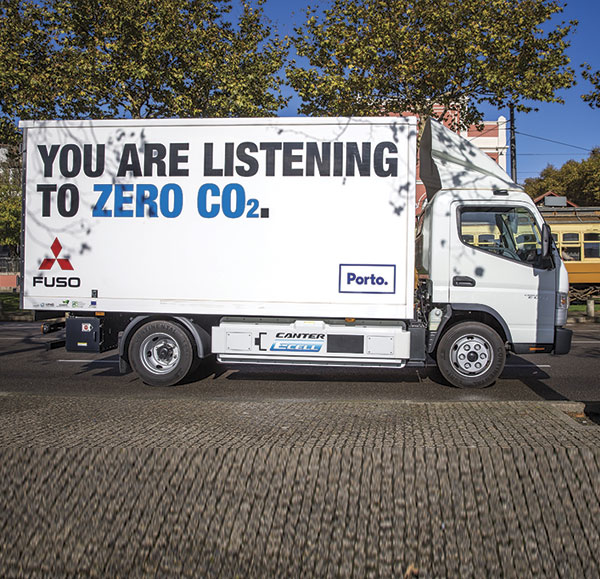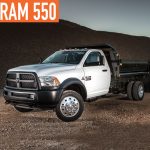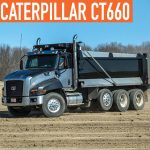Have you ever smelled something cooking or baking and thought about how your life would be if you were, say, actually consuming the thing from which such a delicious smell was originating? That’s what the medium-duty feature is like this month. Obviously more brainwork and vehicle-based, less stomach and edibles—but, you get the point. February’s medium-duty feature is a glimpse into not only what could be, but what the future is headed toward and how we’re getting there.
Across the commercial work truck market, vehicle manufacturers, fleet operators, and individual owner/operators are constantly looking for ways to reduce fuel consumption and emissions as painlessly as possible. One of the companies working hardest at this is the Daimler Truck Group. Its Daimler Trucks Asia subsidiary has already developed a successful medium-duty, diesel-electric hybrid marketed in Japan, Europe, and several other regions across the globe as the Canter Eco-Hybrid.
Now, the same group is well along in developing a totally electric (plug-in) medium-duty work truck. The company calls the new model the Mitsubishi Fuso Canter E-cell, a wholly battery-powered commercial truck that has now been produced in prototype quantities and tested for a full year in customer fleets in Portugal. Early results of the real-life testing, according to the company, have been impressive.
INITIAL TESTING PROGRAM
Altogether, 10 Canter E-cell models have been built. Mitsubishi Fuso Truck and Bus Corporation built the first prototype at its R&D facilities in Japan and used it as a test-bed for establishing battery and motor configuration, as well as sensor and control system development. Mitsubishi Fuso Truck Europe produced the second in its factory in Tramagal, Portugal, as a proving platform to confirm manufacturing techniques and as a demonstration truck for marketing events and trade shows.
Tramagal factory built the next eight E-cell models as working test trucks, which were distributed to several fleet customers as part of a program funded in concert with Portugal’s Public Agency for Competitiveness and Innovation, IAPMEI, and Trade & Investment Agency, AICEP. The goal of the program was to prove the practicality and value of all-electric work trucks in urban environments, while operating as part of normal fleet operations.

Featured Image: Daimler Truck Group is well along in developing a totally electric (plug-in) medium-duty work truck.
Above: The Canter E-cell trucks were all built on a standard Canter 6.0t chassis—the European equivalent of the diesel-powered FUSO Canter FE130 model marketed by Mitsubishi Fuso Truck of America, Inc. in North America.
TEST FLEETS
Fleets were chosen to test the capabilities of the E-cell trucks under a wide range of conditions. The cities of Abrantes and Cascais used the Canter E-cell in the field of horticulture; the City of Lisbon for horticultural and waste disposal purposes; the City of Porto as a means of collecting recyclable waste; and the City of Sintra for forest park maintenance. The commercial company, Transporta, used the vehicle for house-to-house deliveries as part of its short-radius distribution service and the energy supplier, REN, used it for transport purposes within industrial gas storage facilities located in the cities of Sines and Pombal. Lastly, the Portuguese national postal service, CTT, used the E-cell for transport runs between its distribution centers in the cities of Lisbon and Coimbra.
A full year of test data—gathered through the operation of each of these fleets—established the performance and cost-savings characteristics of the Canter E-cell prototypes. While much of the analysis of the data is still being carried out, a number of outcomes are known.
The prototypes established routine ranges at or above the targeted 62 miles, payloads in excess of 4,400 lbs, and cost savings—compared to a conventional diesel-powered Canter—of approximately $1,737 per 10,000 miles, based on Portugal’s electricity rates and diesel fuel costs.

TRUCK AND BATTERY SPECS
The Canter E-cell trucks were all built on a standard Canter 6.0t chassis—the European equivalent of the diesel-powered FUSO Canter FE130 model marketed by Mitsubishi Fuso Truck of America, Inc. in North America.
The E-cell trucks have a GVWR of 13,230 lbs and a body/payload capacity of about 6,600 lbs. They’re powered by an electric motor rated at 150 hp, with a maximum torque of 479 lb-ft. Power is transmitted to the rear axle via a single-speed transmission. Top speed of the Canter E-Cell matches the top speed mandated by the government of Portugal for all vehicles in this weight class—56 mph.
While that would be low for inter-city transport on US interstates, these trucks were designed for urban delivery. And, because the torque of an electric motor is available at its maximum immediately upon start-up, general performance, especially in urban settings, is very good.
Each truck is outfitted with four air-cooled, lithium-ion battery packs supplied by EnerDel, a US company. The battery packs are installed in two fully encapsulated boxes located outside the frame rails on each side of the frame. The batteries have a total nominal capacity of 48.4 kWh. This gives the Fuso Canter E-Cell a range of more than 60 miles.
Normal charging of the batteries at 230 volts/32 amperes takes less than seven hours. A quick-charging system can reduce this to just one hour (390V/>100A), via installation of an available proprietary charging station.
See the comparison chart on page 30 for a summary of similarities and differences between the E-cell and the equivalent standard diesel model.
FOR MORE INFORMATION:
Find out more about the Canter E-cell and all of Mitsubishi Fuso’s products and services, visit http://www.mitfuso.com.
_______________________________________________________________________
MODERN WORKTRUCK SOLUTIONS: FEBRUARY 2016 ISSUE
Did you enjoy this article?
Subscribe to the FREE Digital Edition of Modern WorkTruck Solutions magazine.
![]()




